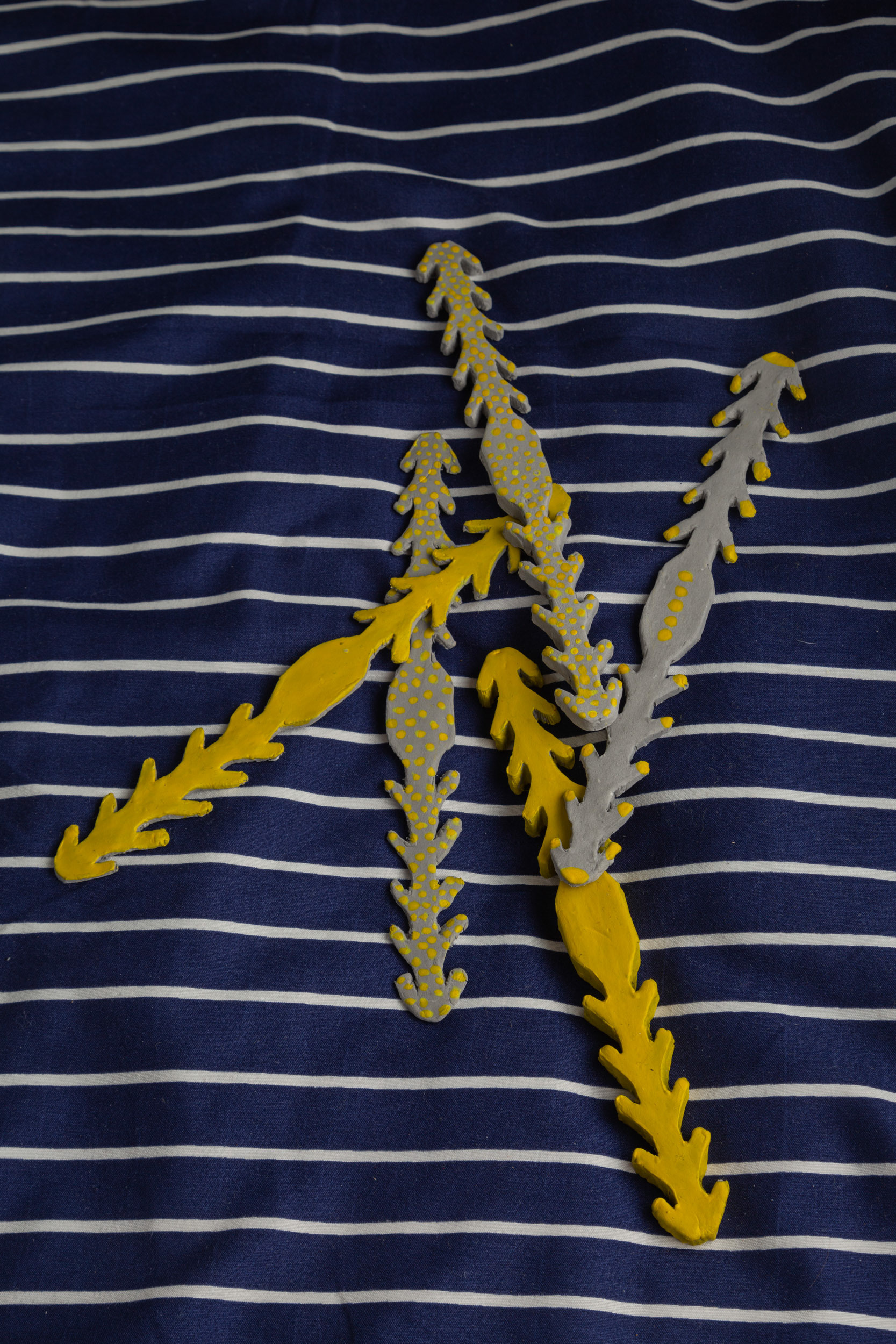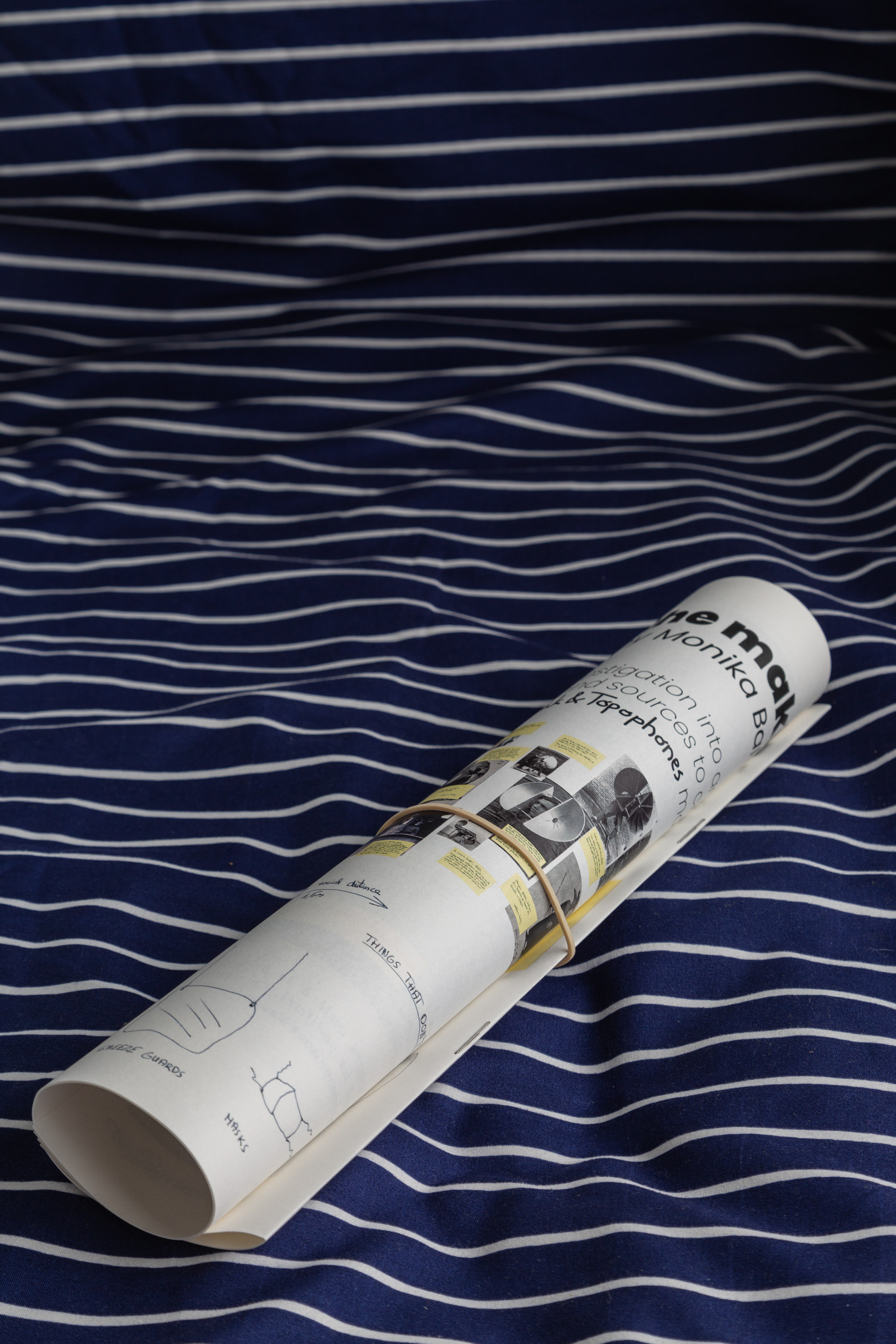Understanding people and their capabilities based on the ways they communicate is tricky. Once, after a failed start
to a conversation with a stranger, I was asked if I speak English.
Face Beak & Topophones is an ongoing project which reflects on the particularities of communication during a pandemic, and the ways it affects society at large, and people with hearing loss in particular. Being a part of this group, I often fear speaking with strangers through fabric face-masks and plexiglass shields, as the sound seems to be trapped, making me incredibly stressed whilst trying to keep up with the conversation. Inspired by the archival material from the 1918 influenza pandemic and the plague, I created a fictional object resembling the shape of a bird’s beak and a topophone. The latter, best described as double ear trumpets, were used by navigators during the Interwar Years (1919-1938). For this work, I dive into the current use of face masks by adding the elements which make, in fact, the functionality of it questionable. With Face Beak & Topophones I aim to show the importance of direct and open human communication.
Breathe in
Breathe out
BECOMING MOVABLE STATUES performance
June 12, Domplein in Utrecht
11:00-17:00
How it started?
January 2021
Galleries, museums, art centers, and institutions have closed their doors and are moving from their physical spaces to digital platforms to share artworks. Does that mean we have to give up a physical presentation of our work? Or, on the contrary, face this new situation and take up the challenge?
BECOMING MOVABLE STATUES is a one-day performative public intervention where young artists challenge themselves to create wearable works and get out of our comfort zone to reach a new audience. We created a unique physical presentation of our projects by transforming it into something carriable. Two-dimensional photographic works turned into three-dimensional wearable outfits! We recognise an important task to develop artistically and professionally, and we wish to create visibility for our projects and expand the networks even if it means getting out in the streets and claiming the audience’s hearts. We welcomed a broad audience – from potato eaters, daughters, and construction workers to social activists, investors, and history enthusiasts.
It’s a sunny Saturday in June, we’re on a crowded Domplein filled with people taking a break from their shopping spree, whilst others wonder around, map in hand, participating in a treasure hunt. Next to the Dom Church we find the ten participants of Lighthouse, FOTODOK’s talent development program for emerging artists. It is interesting to see how passers-by respond to this open-air presentation. Sometimes hesitant, but the treasure hunters, filled with curiosity, approach the makers with ease. The shopping public needs some encouragement, but once they move past their first doubt, they’re ready to immerse themselves in the imaginative worlds of the artists.
Throughout the afternoon I catch a smiling face and yellow cleaning gloves, scrubbing the furniture on the streets with a piece of cloth. ‘I want to keep busy when I’m not speaking about my work’ Monika Balu explains. She starts to talk, and takes out some photographs from her inner pockets, on them we see a mask used to avoid contagion during the Spanish flue. Monika doesn’t want to break down the sensations of this experience, she shares, in relation to the Facebeak she made. This see-through beak becomes foggy with the wearers breath, making it impossible for hard-of-hearing people, such as herself, to read the wearers lips. Her work speaks to the senses. Although that really just explains the subject at hand. It is the lively smile, always engaged with its surroundings that really shares the message, theme and histories of the practices presented to a surprised and excited audience on a Domplein, the tools accompanying them, are just that; tools.
Text by Jornie Vriens
Inventory
To attract a passerby, I created a long yellow jacket and armed my pockets full of objects related to the project. Anyone could approach me, get their hands disinfected, and explore the project through the jacket's various layers while listening to me. By the end of the day, my jacket was nearly empty - I gifted a variety of items, including stickers, postcards, earplugs, and limited edition publication.













